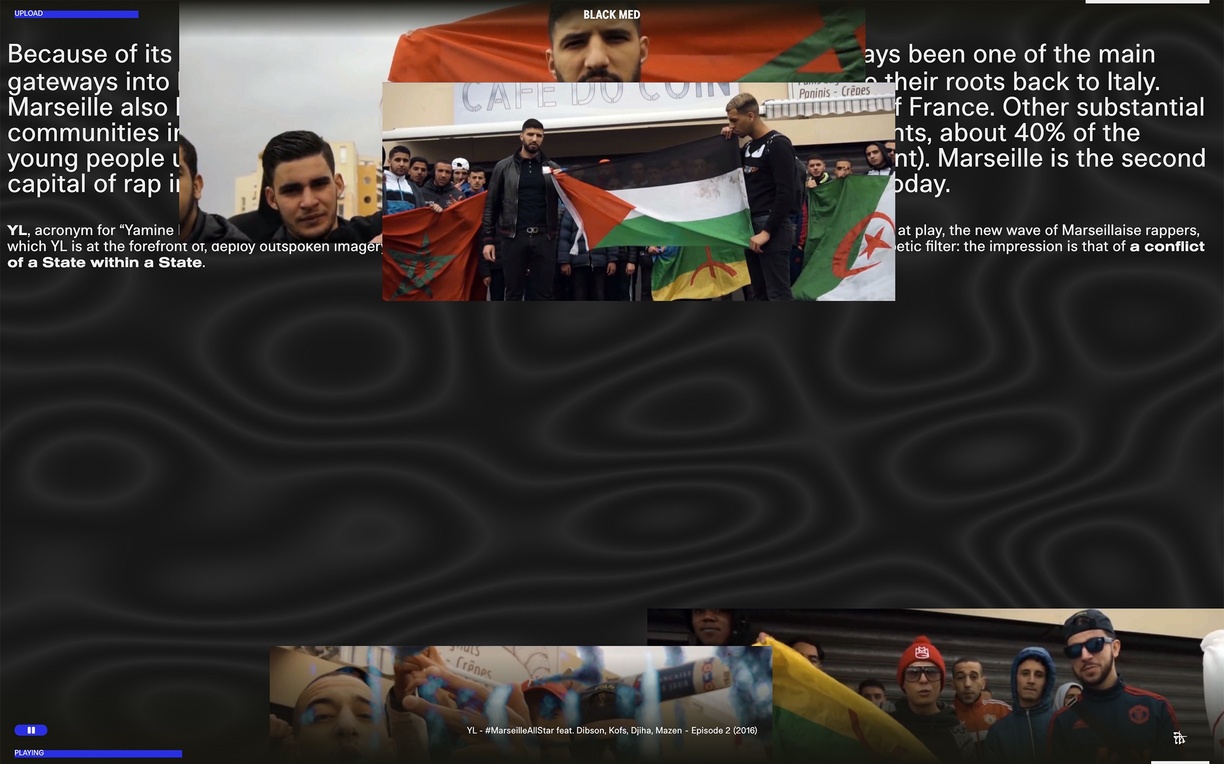
- Aïda Sidhoum
Artists: Christelle Oyiri, Katia Kameli
Listening space: Black Med project, coordinated by Invernomuto
A song within a song within a song focuses on African and Afro-diasporic musical activities from the 1990s to the 2010s, centered on the francophone context. It considers cross-Mediterranean and cross-Atlantic influences as an inherent component of genres such as French hip-hop and R&B, zouk, raï, and coupé-décalé. The sonic complexity created by mixed geographic influences emerges within these genres and related styles—which the music industry often reductively categorizes as “urban” or “world” music.
In France and other non-anglophone European contexts, influential African and Afro-diasporic contributions to chart-topping music genres have gone woefully under-recognized. Those aware of this gap—artists, academics, journalists, archivists, listeners, musicians—have been pointing to this historical shortcoming over the past two decades. A song within a song within a song responds to their observations by presenting works that engage with the geographic and historical density of popular music.
Christelle Oyiri’s video installation War!Club!Action! (2022) memorializes the birth and political history of coupé-décalé, a musical movement emerging from Ivory Coast and forged through an Abidjan-Paris connection. Katia Kameli’s early video work Aïcha (2001) explores how the story of a song—“Aïcha” (1996) by Cheb Khaled—can enable a wider reexamination of art and social histories through a process of dislocation. An accompanying listening space, activated by the sonic platform Black Med, streams music suggested by contributors asked to consider cross-Mediterranean contexts. The scholar Iain Chambers describes the platform, initiated by the artist duo Invernomuto, this way: “Music from below, from the despised depths of the Occidental archive, holds out another promise, sustains another space.”
A publication comprising archival images, new translations of texts by francophone writers, and interviews with archivists and music collectors accompanies the exhibition and acts as a reader on the genres, contexts, and styles observed.
Additional support for the exhibition publication is generously provided by The Jenni Crain Foundation.















